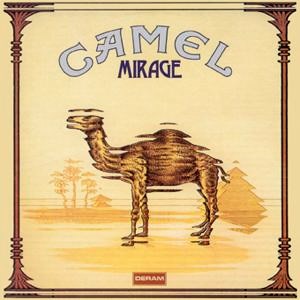
BY HASAN MURAT SÜMER (EE/IV)
hasan.sumer@ug.bilkent.edu.tr
If I had been writing this column in January of 2015, I would have written about the releases of 2014, since that was a great year for new music. Fifty years from now, someone like me will appear and write columns about the music of 2014, with the hope of introducing it to others and keeping it alive. In comparison, 2015 was a weak year, which took away any ambition I might have had to write a piece reviewing its highlights. So, I’ve put together something about Camel instead.
In one of his columns, Altuğ wrote about how impressive it is that the people who listened to Camel during the band’s golden era still form such a dedicated fan base. Surprisingly, Camel also enjoys considerable popularity among young Turkish listeners, to the extent that we do not hesitate to declare that this band is the most underrated band ever.
The reason for this seemingly strange loyalty becomes obvious once you get into Camel’s music, but I’ll try to explain it in words. If we consider only the band’s late output (and not that of their golden era), the reason is very simple: it’s the blues influence. The human heart just loves blues; it’s inevitable. Listen to “Rajaz,” “Straight to My Heart” and “Lawrence” (all from the 1999 album “Rajaz”). The somewhat sad lyrics, the raspy vocals and the lengthy guitar solos that come straight from Andy Latimer’s heart make these songs great for listening when it’s five in the morning and you’re full of melancholy. But if we take the band’s earlier output into consideration, this explanation fails miserably.
Camel’s golden era corresponds to the works produced by their original lineup, with Andy Latimer on guitar and flute (“Air Born”), Pete Bardens on keyboards (“Chord Change”), Doug Ferguson on bass guitar (“Another Night”) and Andy Ward on drums (“Lunar Sea”). The songs listed in parentheses here are said to reflect the personalities of the musicians in question. The four studio albums and many live performances belonging to this period defined the Camel sound: ambitious, yet simple.
And “simple” is the key word to understanding why Camel fans take their loyalty to extreme levels. In the case of progressive rock in general, it requires patience to appreciate the music. Sometimes you need to listen to a 20-minute song more than 20 times to get into it. In the case of Camel, however, it only takes one listen to add a song to your favorites list. It’s as easy to comprehend as a pop song, and yet Camel is among the top creators of progressive rock.
 So how does that happen—how can you get such service for a very low price? Camel is the gateway band to prog: it gives a taste of the free-flowing Canterbury scene, but without the weird bits; it gives a taste of highly technical jazz-fusion, but without as much complexity; it gives a taste of the genre’s lengthy, suite-form songs, but without the time-consuming buildups. Once you get to the level of Camel, you can either stay there or move on and discover hard-to-comprehend bands like Yes, Genesis and King Crimson. But no matter what you do, Camel changes your perspective on rock music. As a result, it conquers a special place in the listener’s heart.
So how does that happen—how can you get such service for a very low price? Camel is the gateway band to prog: it gives a taste of the free-flowing Canterbury scene, but without the weird bits; it gives a taste of highly technical jazz-fusion, but without as much complexity; it gives a taste of the genre’s lengthy, suite-form songs, but without the time-consuming buildups. Once you get to the level of Camel, you can either stay there or move on and discover hard-to-comprehend bands like Yes, Genesis and King Crimson. But no matter what you do, Camel changes your perspective on rock music. As a result, it conquers a special place in the listener’s heart.
In the following years, the band gradually lost most of its original members, and Latimer basically became Camel. During the late seventies, Camel, like most of its peers, turned to pop in order to adapt to changing fashions. But Andy Latimer is a very special man. Even when the recording labels demanded albums with more potential for commercial success, he always inserted one or two songs that carried on Camel’s spirit. Listen to the album “I Can See Your House From Here” (1979) and take note of the song “Ice,” and you’ll understand what I mean. I guess Andy didn’t feel right about it, or he may have faced problems with the recording companies, but in any case, when the nineties arrived, he formed his own label to produce his music: Camel Productions.
This was an important turn of events for Camel, as Andy brought the band’s spirit back with the music released under this label. Although these new releases were much more blues oriented and were not as appreciated as Camel’s golden-era productions, Andy must have made his fans happier than ever. And although he developed bone marrow cancer at one point, he punched it in the face and kept on recording and touring. In my opinion, this is the behavior of a true artist: not doing what he does for the satisfaction of companies or even fans, but above all for his own satisfaction, so that when he looks back at the past, he’ll have no regrets. Maybe I’ll write another column in the future in which I actually analyze Camel’s music, but for now, I hope I’ve managed to explain how Camel acquired its dedicated fan base.
